
Hiking—in all its many manifestations—is a hugely popular outdoor pastime, and almost everyone seems to have an opinion about what kind of footwear is best for this beloved activity. This article takes a closer look at hiking boots and discusses some of the most common misconceptions about this important type of footwear. We debunk the biggest hiking boot myths and examine why conventional hiking boots cause foot problems in so many people. We also put forward our own definition of what constitutes foot-healthy hiking footwear and highlight a number of models that have worked great for us and others out on the trail.
Three Big Myths About Hiking Boots

In our experience, we have found that there are a number of myths about hiking footwear that seem to exist in the collective consciousness. The three BIGGEST myths about hiking boots are the following:
-
That they absolutely must possess a rigid upper with brace-like ankle support to help prevent ankle sprains
-
That they absolutely must possess a thick, rigid, heavily-lugged sole to protect the foot from trail features and debris
-
That they absolutely must be heavy-duty (i.e., clunky) to be durable and effective
How did these myths come about? And how can they be addressed?
Addressing the Myths

The hiking boot myths noted above are deeply rooted in the hiking and outdoor subculture. These myths have largely been perpetuated by the footwear industry to scare people into increasingly built-up (and seemingly ever more expensive) shoes and boots that minimize the connection with the earth and the natural environment. More elaborate specialty footwear may be required for certain activities, such as advanced mountaineering, but many people are not aware that the features mentioned above—rigid uppers, thick soles, clunky overall design—not only make for uncomfortable footwear, but are also injurious, especially over many thousands of footfalls. Some people believe that this is just how it has to be when it comes to hiking footwear, but we beg to differ. Let's tackle these misconceptions one by one to gain an even better understanding of where they come from and why the logic behind them is faulty.
Myth #1: Rigid Uppers Prevent Ankle Sprains
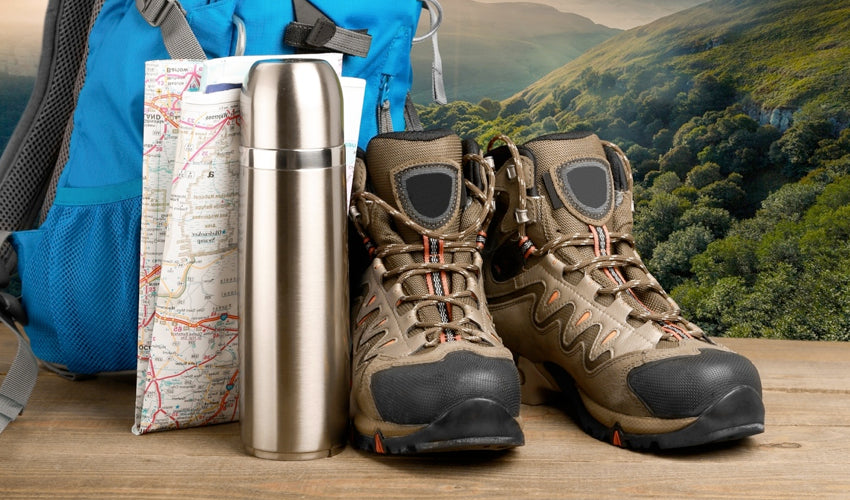
Many people believe that hiking boots need to have a rigid upper that braces the ankle to protect against inversion sprains (i.e., a forceful rolling of the ankle that damages ligaments on the outside of the ankle). The truth is, what protects the ankle from inversion sprains is not stiff material surrounding the ankle, but rather strong and healthy tendons and ligaments crossing the ankle joint. No amount or type of upper material can actually immobilize the ankle joint, and even if it were possible to do so, this is not, in any way, desirable or favorable. Your foot and lower leg need to be able to work as nature intended in order to protect your body when active and be as functional as possible.
The best way to prevent ankle sprains is to develop foot and lower leg strength through the act of wearing footwear that allows your feet to become strong and resilient on their own. Footwear that puts your entire foot on a level plane and close to the ground and that allows your toes to splay naturally creates a much more stable base of support that can help you prevent ankle rolls.
Also, footwear with only a minimum amount of material between the foot and the ground (for basic protection of the sole) lowers your foot's center of gravity, which has the beneficial effect of reducing the likelihood of an ankle sprain. A thinner and more flexible outsole also enables your foot to feel the ground better, and this feedback to your brain allows your foot to make appropriate microadjustments that ultimately minimize errant footfalls and injury.
Myth #2: Heavily Lugged Soles Are an Absolute Necessity
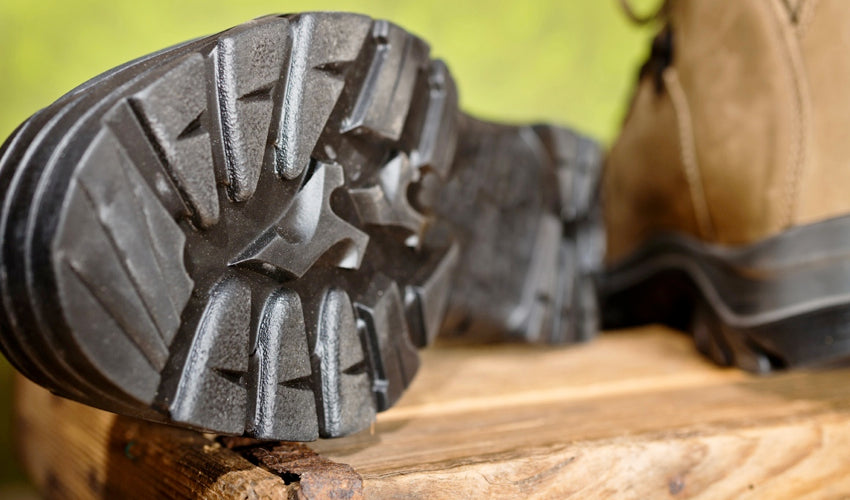
The idea that hiking boots must possess thick, rigid, heavily-lugged soles in order to protect the foot and improve foot function is deeply ingrained in our culture. This myth stems from the notion—often put forward by healthcare practitioners and the footwear industry—that our feet are inherently weak and flawed and must be supported in thick-soled footwear in order to avoid injury and perform at their best. Thick soles, it's reasoned, offer greater protection and comfort.
The biggest problem with rigid, inflexible soles is that they hold your foot in a compromised and deformed position, both during activity and at rest. Stiff soles, when combined with other problematic shoe design elements, effectively immobilize your foot in an abnormal configuration and prevent your foot structures from performing the way nature intended.

Stiff-soled shoes are also an impediment to mindful walking. Footwear with thinner, more flexible soles improves your ability to sense and feel the ground, which allows you to adjust your foot position “on the fly” to help prevent an inappropriate or injurious foot placement. In truth, very little material is needed between the foot and the ground for adequate protection of the foot's sole.
The idea that heavily-lugged soles are superior to other, less aggressive tread patterns is another myth perpetuated by the footwear industry. It seems intuitive on some level that big lugs would be helpful in navigating a variety of terrain, but the truth is that the kind of terrain most hikers encounter can be successfully traversed in footwear that possesses only minimal lugs or no lugs at all.
What creates optimal traction and stability is not lugs on the sole of your hiking boot, but rather a stable and healthy foot configuration inside a boot (or other type of footwear) that allows you to feel the ground, in combination with a “grippy enough” sole. This configuration involves placing your foot on a completely flat surface and allowing your toes to spread out so that your feet can fully participate in the gait cycle and be the optimal support platform that your body needs.
Myth #3: Hiking Boots Must Be Heavy-Duty
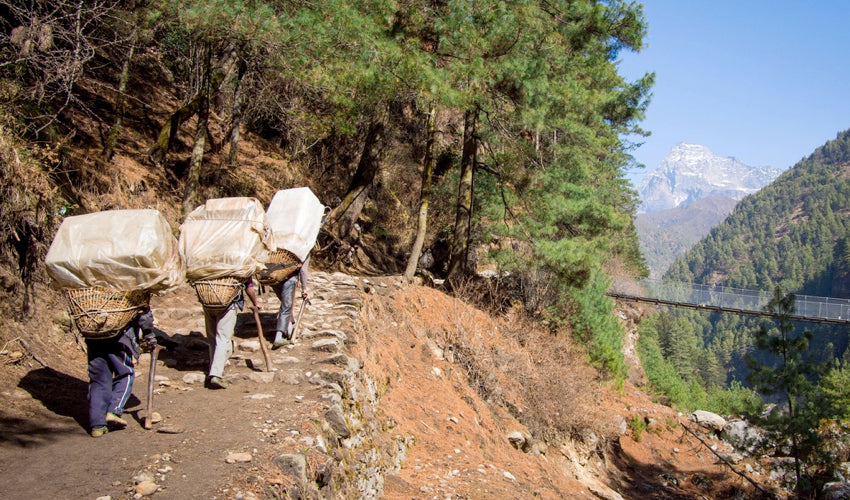
Somehow we've been conditioned to believe that hiking footwear must encase the foot and never let it see the light of day. The bulkier and more built up the boot, the better. What's truly amazing is to witness mountain porters in the High Himalayas transporting heavy building materials or even home appliances (such as refrigerators!) on their backs while wearing nothing more than a thin sandal on their feet (or, in some cases, no sandal at all). Or consider the Tarahumara, a Native American people of northwestern Mexico, who run ultramarathon distances in thin huaraches sandals.
In many parts of the world, people successfully travel long distances on foot, over varied terrain, using very simple footwear that lets the foot fully participate in the trekking experience. These unshod or minimally-shod individuals experience few of the foot problems that plague individuals in shod societies. The truth is, there is a wide range of footwear options that can be appropriate for hiking, and hiking footwear can be exceptionally lightweight and minimalist. We'll explore a few of these options in a section below.
Problematic Elements in Conventional Hiking Boots
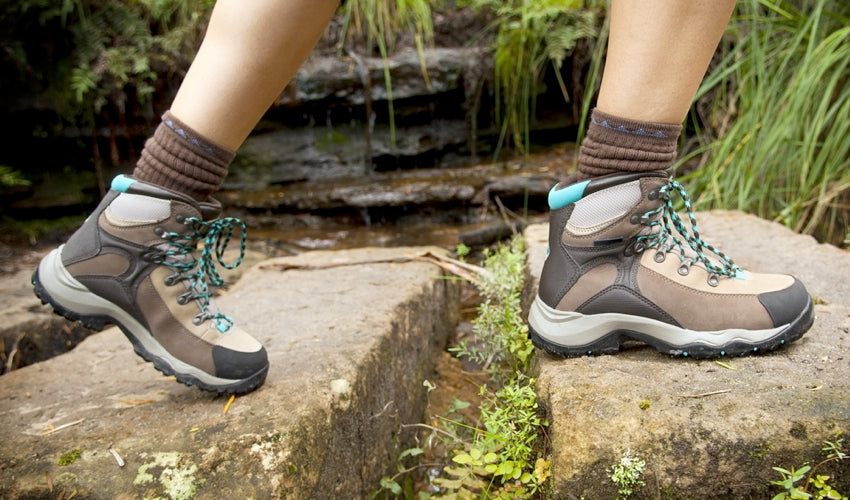
Having looked at some of the most common myths about hiking boots, let’s now briefly discuss the characteristics of conventional hiking boots that may lead to foot problems in trekkers. Most conventional hiking boots possess the injurious design elements of heel elevation, toe spring, tapering toe boxes, and rigid, inflexible soles. These design elements are common in most conventional footwear, though they are particularly problematic in hiking shoes, where the forces acting on the feet are significantly greater than walking without a pack on a level surface (as most of us do in our daily lives).
Conventional hiking boots force your toes into a wedge position and encourage the repetitive jamming of your toes into the end of the toe box, which can lead to sore feet and toes and excessive strain on the muscles, tendons, and ligaments acting on or supporting your feet, knees, and ankles (as well as crooked toes, over time). Blisters and toenail issues (e.g., ingrown toenails, infections, blackened nails, and nail loss, etc.) are additional problems that are commonly caused by conventional hiking boots.
Before we (Natural Footgear co-founders Drs. Marty and Robyn Hughes) began wearing hiking footwear that actually accommodates natural toe splay, we both suffered from terrible lateral knee pain on long hikes, especially during the descents. Once we switched to zero drop (i.e., completely flat) footwear and repositioned our toes in the way nature intended, we experienced no further knee pain or discomfort while hiking or running. We also experienced no more ankle sprains, shin splints, or toenail issues, and our feet felt significantly better at the end of long hikes.
Please check out our article entitled Benefits of Wide Toe Boxes for Hiking for more info on this topic.
Definition of a Foot-Healthy Hiking Boot

As I mentioned at the beginning of this article, almost everyone who hikes has their own idea of what makes for great hiking footwear. Here is our definition of what constitutes a great hiking boot:
A great hiking boot protects your feet from the elements while helping them become stronger and more resilient. A great hiking boot stays out of the way of your foot and toes and allows you to walk for many, many miles without developing common foot problems. A great hiking boot allows you to feel and sense the varied terrain that you trek upon and can be used in a variety of climatic conditions. A great pair of hiking boots should, at the end of a long hike, leave your feet in equal or better shape than before you set out. A great hiking boot may not, in some cases, be a boot at all, but rather an athletic shoe or sports sandal that’s designed with natural foot health in mind.
This definition has stood the test of time for us and is still the yardstick we use to measure foot-healthy hiking footwear.
So, What Are Examples of Great Hiking Footwear?

We at Natural Footgear have, over the years, tried and tested many different types of hiking footwear, and we've come away from our experiences on the trail with a renewed appreciation for the challenges that manufacturers face when trying to create a winning model. It's a difficult thing for companies to achieve, given all the many technical needs hikers have and the demands that are placed upon the feet during this often rigorous outdoor pursuit. But some manufacturers have indeed risen to the challenge. Here is a selection of the footwear we have found, in our experience, to be the most comfortable and the most supportive (truly supportive, in the sense that these models let your foot function as nature intended) out on the trail:
Lems Boulder Boots
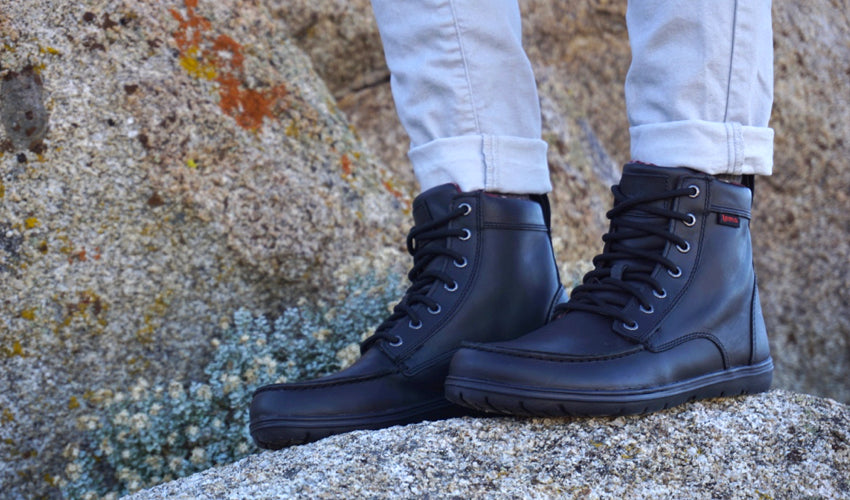
Hikers and trail walkers rightfully rave about the Lems Boulder Boot, a comfortable, foot-healthy, ultralight, and flexible minimalist boot that works well in combination with Correct Toes and other natural footgear. This flat-soled, wide toe box, and easily packable boot can be used for day hikes or multi-day treks, or even for around-town wear. For those seeking the driest possible outing, there is a waterproof version of the Boulder Boot available. View men's and women's options.
SHOP LEMS BOULDER BOOTS
Xero Xcursion Boots

Foot-shaped, flat-soled, and flexible, the fully waterproof Xero Xcursion is another standout option for trail walkers and backcountry enthusiasts. This sturdy, yet lightweight hiking boot works great in combination with Correct Toes toe spacers and other helpful footgear, and it allows you to sense the ground beneath your feet and tread lightly upon the earth. View men's and women's options.
SHOP XERO XCURSION BOOTS
Lems Primal Pursuit Shoes

Durable, comfortable, and trail-ready, the Lems Primal Pursuit is an excellent choice for all sorts of backcountry excursions. Both experienced adventurers and new adopters of foot-healthy footwear alike will appreciate the construction of this combination athletic and transitional shoe. The Primal Pursuit also works great as a casual shoe for outings around town. View men's and women's options.
SHOP LEMS PRIMAL PURSUIT SHOES
Xero TerraFlex Shoes

The Xero TerraFlex is a fantastic trail shoe that lets your foot function naturally and works great on a variety of terrain. This minimalist hiking shoe, with its zero drop sole and generous toe box, features a ballistic mesh upper and a Tough Tech toe bumper. An excellent trail companion, the durable Xero TerraFlex is compatible with Correct Toes and possesses a dual-direction chevron tread pattern. View men's and women's options.
SHOP XERO TERRAFLEX SHOES
Lems Primal 2 Shoes

The Lems Primal 2 is one of the finest hiking shoes we have ever tried. This healthy-foot-shaped minimalist shoe works great both on the trail and around town. It's super lightweight and has a supremely flexible sole, which allows you to easily stow it in your pack when not in use. Like the other footwear options listed here, we've found that the Lems Primal 2 helps build strong and healthy feet with every footfall. View men's and women's options.
SHOP LEMS PRIMAL 2 SHOES
Ahinsa Sundara Ankle Barefoot Boots

If you're looking for a boot that protects your foot yet also lets your foot function as nature intended, it's hard to beat the Ahinsa Sundara Ankle Barefoot. This foot-healthy minimalist boot is made of high-quality vegan materials and possesses one of the most generous toe boxes we've ever seen. Lightweight, completely flat-soled, and Correct Toes-compatible, the Sundara Ankle Barefoot is a great choice for the trail. View men's and women's options.
SHOP AHINSA SUNDARA ANKLE BAREFOOT BOOTS
Luna Mono Winged Edition Sandals
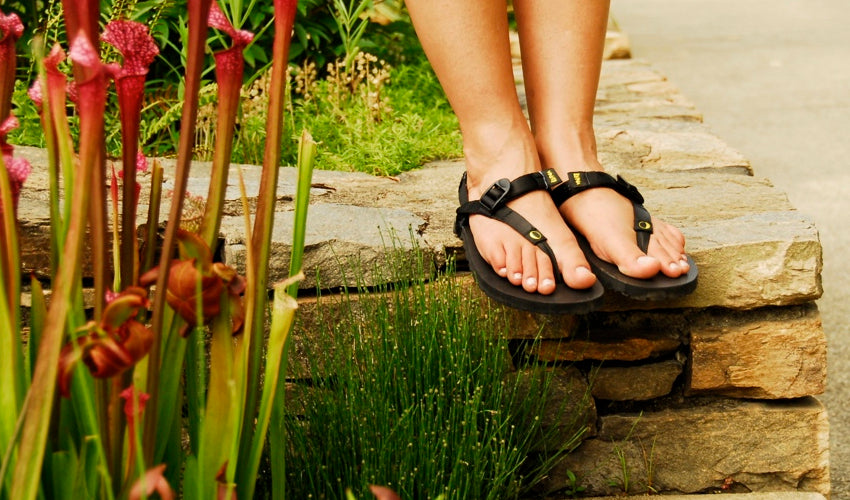
Though most people don't immediately think of a sandal for hiking or trekking, in warmer temperatures, sports sandals can indeed be an excellent option. The Luna Mono Winged Edition is a foot-healthy sports sandal that can be used for a wide range of athletic activities, from hiking to trail running to water sports. Using lightweight, open-toe footwear for outdoor activities can add a fun new element to your regular workouts. View men's and women's options.
SHOP LUNA MONO SANDALS
Additional Helpful Footgear

Flat, wide, and flexible hiking footwear is great on its own, but pairing it with additional helpful footgear in the form of Correct Toes toe spacers, Injinji toe socks, Pedag metatarsal pads, and Naboso insoles can be a total game changer for many hikers, especially those who have long battled foot, knee, hip, or other lower extremity problems.
If you're planning to be active outdoors through hiking or trail running, consider investing in the full suite of natural footgear so that you can enjoy maximum foot comfort and rehabilitate your foot and toes with every step. This is an investment that can pay massive foot health and quality of life dividends.
SHOP CORRECT TOES SHOP INJINJI TOE SOCKS SHOP PEDAG MET PADS SHOP NABOSO INSOLES
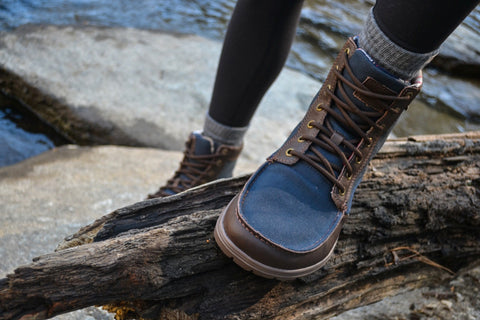 Dr. Robyn and I were reminded on a recent hike of the importance of wide toe box footwear and natural toe splay for foot comfort and injury prevention. The combination of Correct Toes toe spacers and men's and women's wide toe box footwear is extremely helpful in preventing the foot and knee problems that plague so many trekkers, especially on long hikes and descents, and it saved us from considerable...
Read more
Dr. Robyn and I were reminded on a recent hike of the importance of wide toe box footwear and natural toe splay for foot comfort and injury prevention. The combination of Correct Toes toe spacers and men's and women's wide toe box footwear is extremely helpful in preventing the foot and knee problems that plague so many trekkers, especially on long hikes and descents, and it saved us from considerable...
Read more




















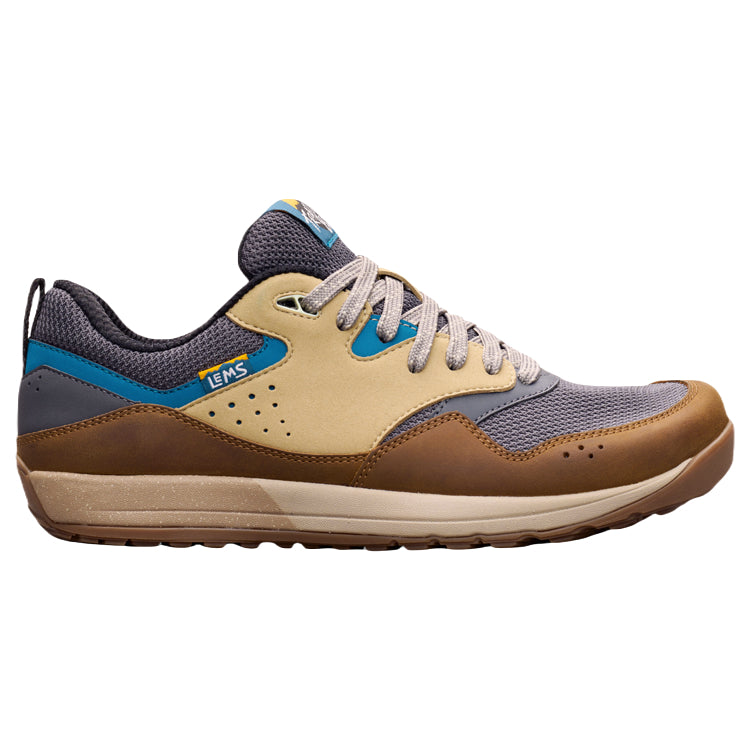
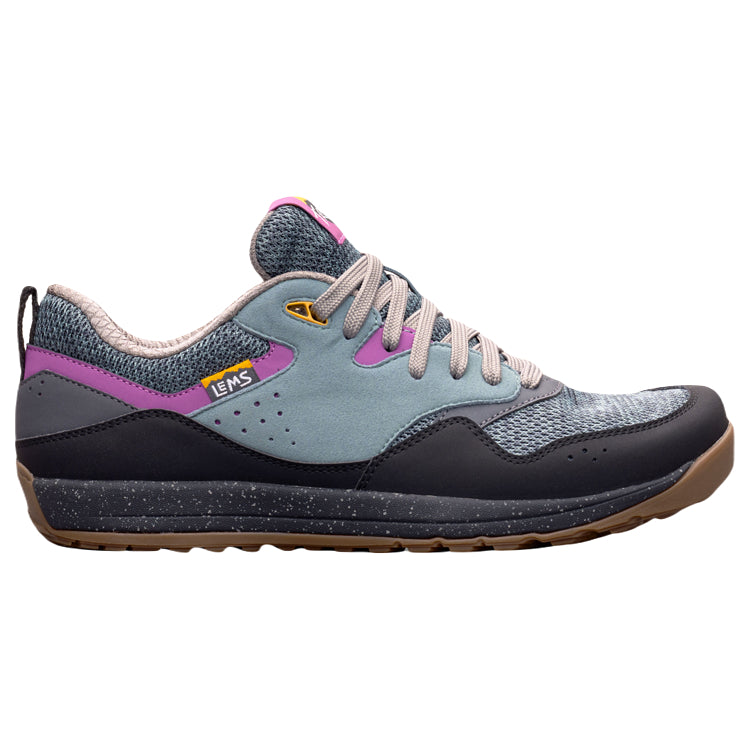
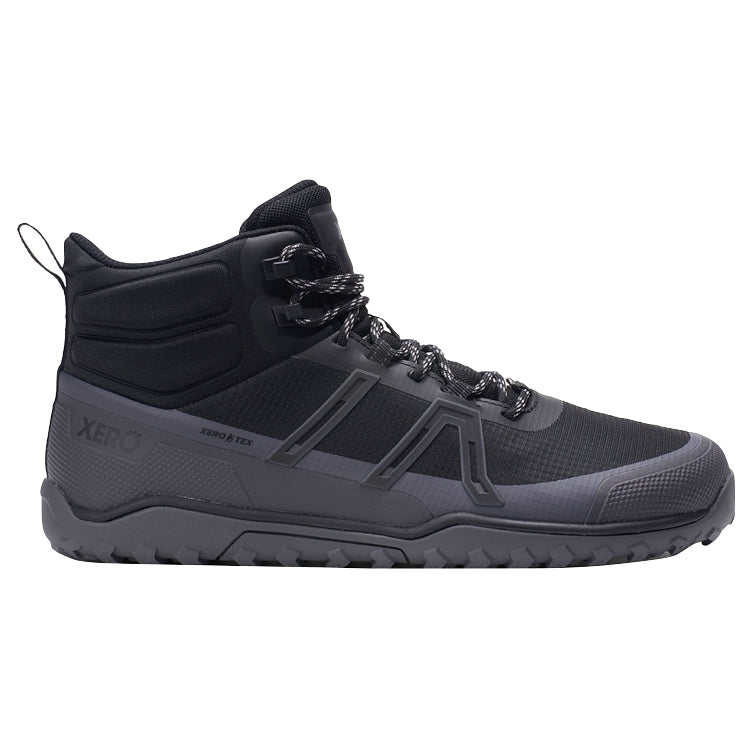
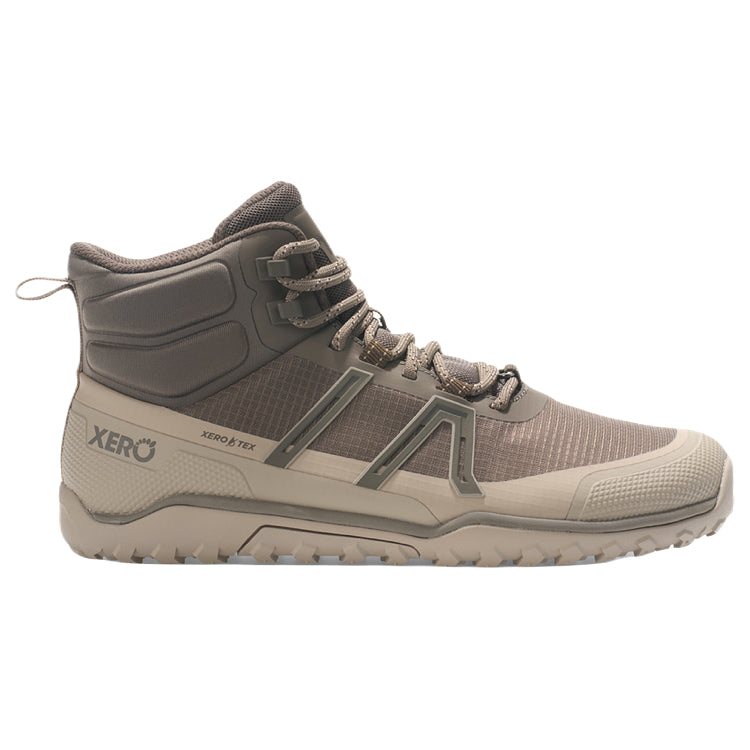
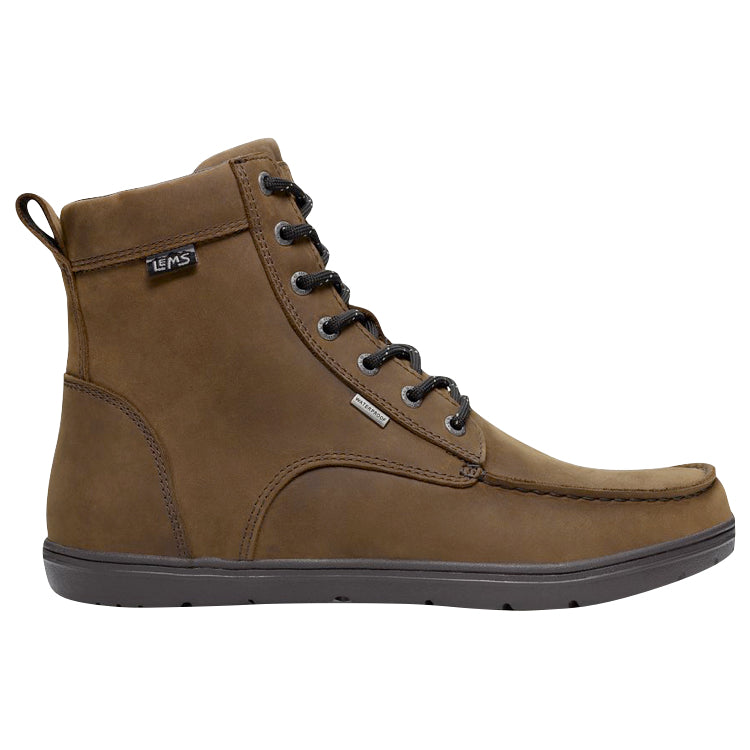
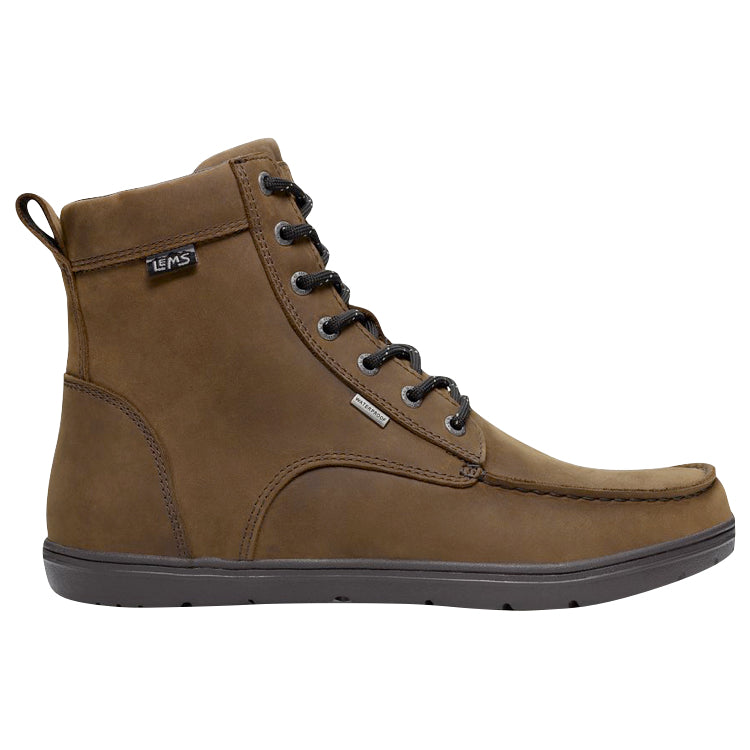
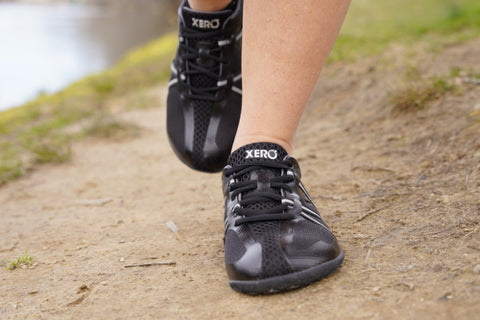
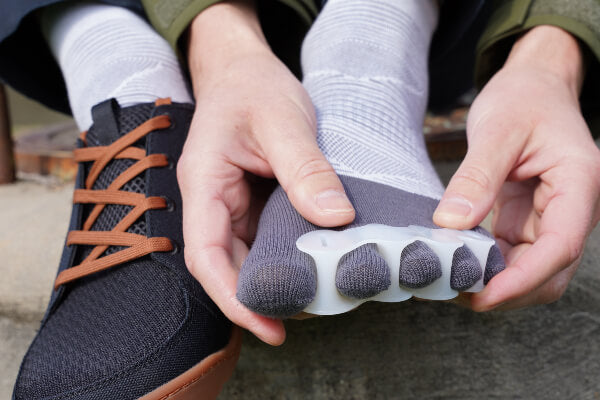
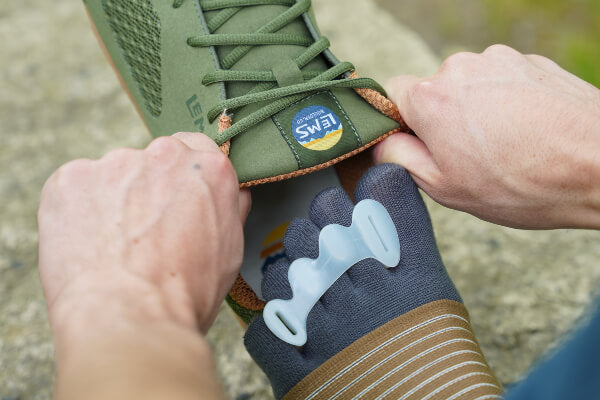
I’m a longtime backpacker and have recently started rucking as a way of training for my long hikes. It’s super challenging, and I know that it’s helping me get stronger. But I’m curious about your thoughts on rucking and foot health. What’s the impact of rucking on the feet?
Many thanks for your question, Michael! Rucking—walking or hiking with a weighted pack—has become a popular outdoor health and fitness activity in recent years and has long been an important part of military training to help build stamina and resilience in soldiers. I’ve personally found rucking to be an incredible full-body workout that strengthens the legs, core, upper body, and the cardiovascular system. It’s one of the quickest and most effective ways I’ve found to improve a variety of health and fitness markers, from increased bone density to improved posture to enhanced muscular endurance to heightened mental toughness.
Because of the higher load associated with carrying a weighted rucksack, the effects on the body’s musculoskeletal system—including, and perhaps especially, the feet—are accentuated. When feet are required to bear more than just body weight, they respond by becoming stronger. This includes both intrinsic foot muscles and those that originate in the lower leg and act upon the foot. Most people who practice rucking as a health and fitness activity find that their arches become stronger and more prominent over time, and rucking can also improve the endurance of the foot’s soft tissues, including tendons and ligaments. All of this translates into increased foot robustness and, for many, a reduced likelihood of foot and ankle injuries.
Of course, rucking is an activity that challenges the body, and some people may experience foot issues such as blisters, hotspots, calluses, thickened skin, foot fatigue, foot soreness, or heel and ankle stress. Much of this can be prevented or alleviated, though, through the thoughtful selection of foot-healthy footgear. Things like wide box footwear (never more important than when rucking), toe spacers, and toe socks can go a long way toward preventing potential foot problems before they arise. And how you do the activity matters too. It’s important to start gradually (with low weight) and listen to your body to avoid excessive strain or injury. If you experience persistent pain or discomfort, it’s a good idea to temporarily curtail the activity and seek advice from a foot care or fitness professional.
Rucking’s not for everyone, but if you enjoy backpacking—and it sounds like you do—or if you like challenging yourself through physical exertion, it can be a very effective way to build foot form and function, as well as overall musculoskeletal (and cardiovascular) fitness. I hope this helps answer your question, Michael! Please let me know if you have any follow-up questions I can assist with.
Yours in Foot Health,
Dr. Marty Hughes
I have been doing this barefoot hiking thing for about four years. I’ve tried the Xero TerraFlex, Xcursion, and Alpines, as well as the Z-Trail sandals. I’ve just started using the Lems Primal Pursuit. What I have experienced is that, in winter, in the soft snow, my feet feel great. But once the snow melts and I hike on harder surfaces (lots of rocks and roots here in New Hampshire where I hike), my feet feel like they’ve been worked at the end of the day. I’ve put metatarsal pads in all of them except the sandals, and it doesn’t seem to make a difference. I’m still determined to find the right combination. I spoke with another barefoot hiker, and he said to go slower. Well, I hike with other people, and I don’t often have a choice about the speed. Having said that, 2-3 mph is an average speed, particularly going uphill. Coming down it is a bit faster. I’d like to think that after a month or so my feet will adjust, but that doesn’t seem to be the case. I am tempted to try the Altra Lone Peaks, but the sole is quite thick, which kind of defeats the purpose, but that might help my feet to not feel so tired at the end of a day of hiking. Any suggestions?
Hi, Kyle,
Thank you for your comment. I appreciate your desire to find a good workable (and long-term) solution for your hiking adventures. Finding that perfect balance between comfort and performance can be challenging when selecting the best hiking footwear for you and your unique feet. Perhaps the Lone Peak is worth a try? Or perhaps the Primal Pursuit will prove to be a good match for you? I think, if you’re hiking with others, it may be worth considering adjusting your pace, even if just for part of the hike, to give your feet a break. Foot adaptation can take time, so keep listening to your body and adjusting as needed. We’re here if you have any additional thoughts or questions.
All the best,
Marty Hughes, DC